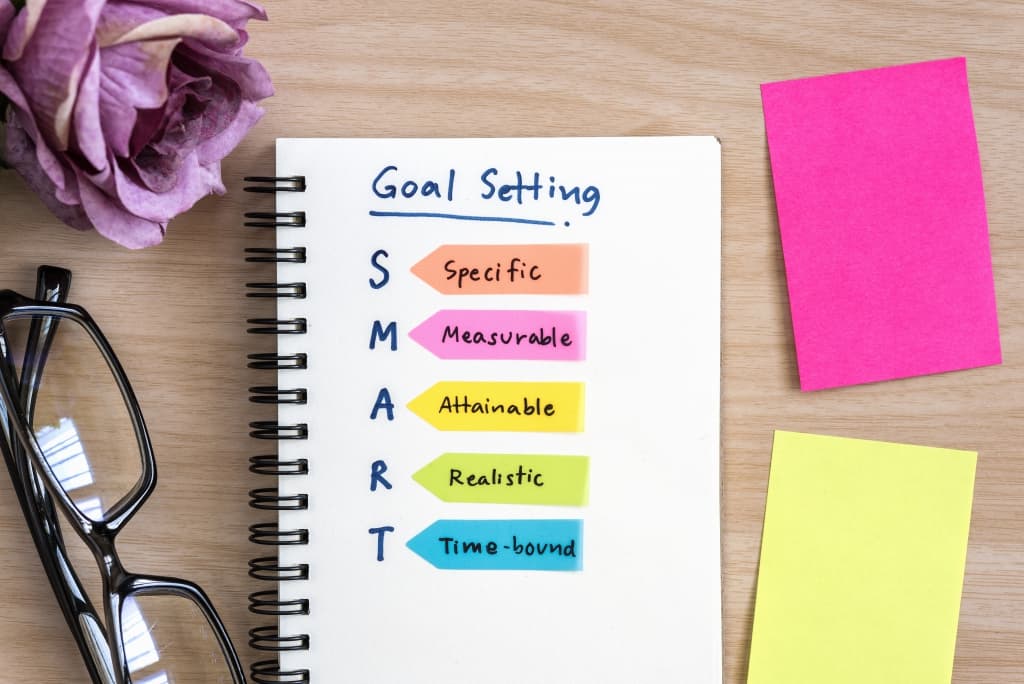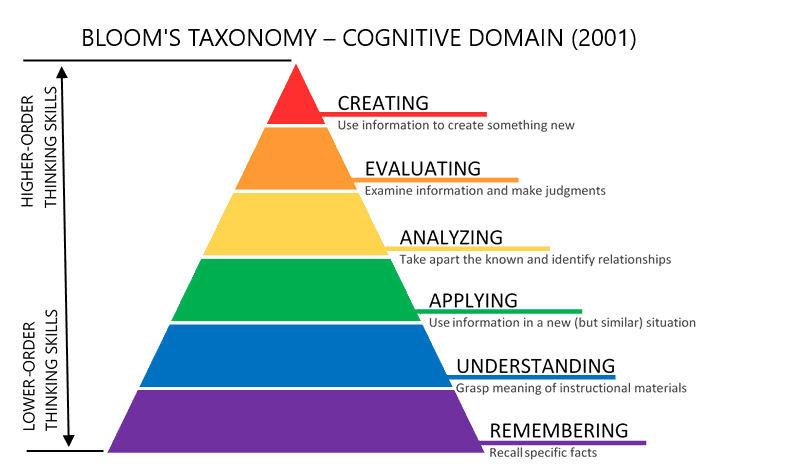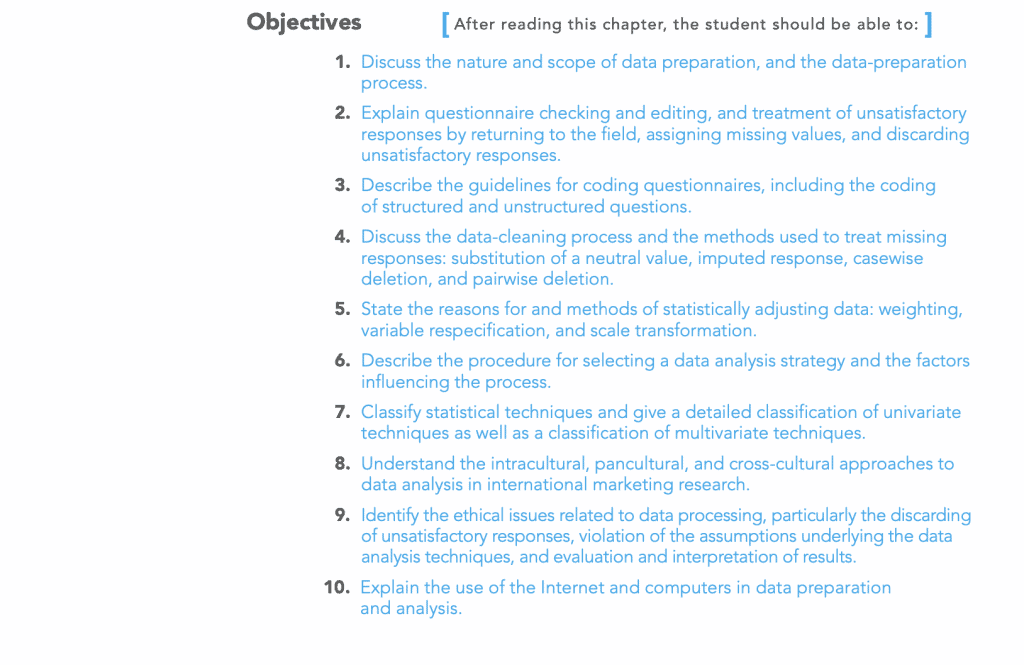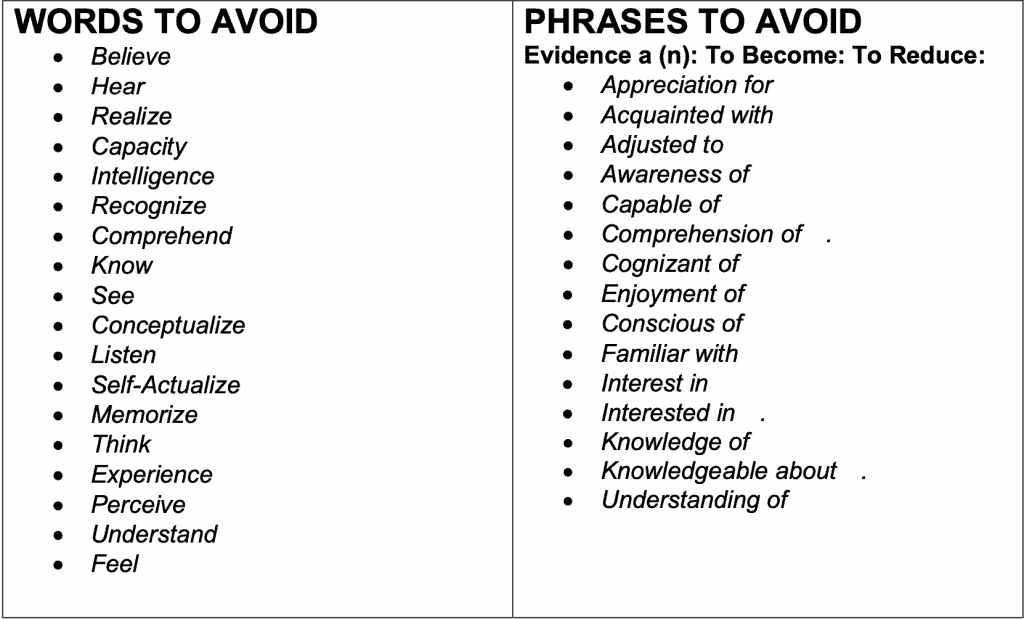「千里之行,始於足下。”
寫下學習目標始終是個令人畏懼的開始,但卻是激勵人心的,是致力於自我提升的第一步。
如果您正在尋找撰寫學習目標的好方法,我們能幫您找到合適的方案。本文為您提供最佳學習目標範例,並指導您如何有效率地撰寫學習目標。
| 5個學習目標是什麼? | 具體、可衡量、可實現、相關且及時。 |
| 學習目標的三個目的是什麼? | 設定目標,指導學習,並幫助學習者專注於他們的過程。 |
目錄:
什麼是學習目標?
一方面,課程的學習目標通常由教育工作者、教學設計者或課程開發者制定。 它們概述了學生在課程結束時應掌握的具體技能、知識或能力。 這些目標指導課程、教學材料、評估和活動的設計。 它們為教師和學生提供了清晰的路線圖,說明期望什麼和實現什麼。
另一方面,學習者也可以將自己的學習目標作為自學目標。這些目標可以比課程目標更廣泛、更有彈性。它們可以基於學習者的興趣、職業抱負或他們希望提升的領域。學習目標可能包含短期目標(例如,完成一本特定的書籍或線上課程)和長期目標(例如,掌握一項新技能或精通某個領域)。
什麼是好的學習目標範例?

編寫有效的學習目標的關鍵是使它們變得聰明:具體、可衡量、可實現、相關和及時。
以下是透過 SMART 目標設定為您的技能課程設定 SMART 學習目標的範例: 在課程結束時,我將能夠有效地利用社群媒體和電子郵件行銷,為小型企業規劃和實施基本的數位行銷活動。
- 具體: 了解社交媒體和電子郵件營銷的基礎知識
- 衡量: 了解如何讀取參與率、點擊率和轉化率等指標。
- 可實現: 將課程中學到的策略應用到實際場景中。
- 相關: 分析數據有助於完善營銷策略以獲得更好的結果。
- 限時: 三個月內實現目標。
相關新聞:
良好的學習目標示例
在編寫學習目標時,重要的是使用清晰且以行動為導向的語言來描述學習者在完成學習體驗後能夠做什麼或展示什麼。

本傑明·布魯姆創建了可測量動詞的分類法,以幫助我們描述和分類可觀察到的知識、技能、態度、行為和能力。 它們可以用於不同層次的思維,包括知識、理解、應用、分析、綜合和評估。
常見學習目標範例
- 閱讀本章後,學生應該能夠 [...]
- 到[...]年底,學生將能夠[...]
- 經過[....]課程後,學生將能夠[....]
- 閱讀本章後,學生應該理解 [...]
學習目標 知識範例
- 理解[….]的意義/重要性
- 了解 […] 與 […] 的差異與相似之處
- 了解為什麼 [...] 對 [...] 有實際影響
- 如何規劃 [...]
- […]的框架和模式
- […]的性質和邏輯
- 影響[….]的因素
- 參與小組討論,貢獻見解[….]
- 推導 […]
- 理解[….]的困難
- 說明[….]的原因
- 底線 [...]
- 找出 [...] 的意思

學習目標 理解範例
- 辨識並解釋 [...]
- 討論 […。 ]
- 確定與[…]相關的道德問題
- 定義 / 辨識 / 解釋 / 計算 [...]
- 解釋[….]之間的區別
- 比較並對比 […] 之間的差異
- 當[….]最有用時
- 從三個角度來看[….]
- […] 對 […] 的影響
- [...] 的概念
- [...]的基本階段
- 主要描述符 [...]
- 主要類型 [...]
- 學生將能夠準確地描述他們的觀察結果[...]
- […] 的用法和區別
- 透過在[....]的協作小組中工作,學生將能夠對[....]做出預測
- 描述 […] 並解釋 […]
- 解釋與[….]相關的問題
- 將 […] 分類並給予 […] 的詳細分類
學習目標 應用舉例
- 將他們對[….]的知識應用於[….]
- 應用[….]的原理來解決[….]
- 示範如何使用 [...] 來 [...]
- 使用 […] 解決 […] 以得出可行的解決方案。
- 設計一個[….]來克服[….]透過[….]
- 與團隊成員合作創造一個協作[….]來解決[….]
- 舉例說明[….]的用法
- 如何解讀 […]
- 實踐 […。 ]
學習目標 分析實例
- 分析導致[….]的因素
- 分析[….] 在[….] 中的優勢 / 劣勢
- 檢查 [….] 之間存在的關係 / [….] 和 [….] 之間建立的聯繫 / [….] 和 [….] 之間的區別
- 分析導致[….]的因素
- 學生將能夠分類 [...]
- 從[….]的角度討論[….]的監督
- 分解 […]
- 區分 […] 並識別 […]
- 探索[….]的涵義
- 調查 [...] 和 [...] 之間的相關性
- 比較/對比 […]
學習目標 綜合範例
- 結合各種研究論文的見解來建構 [...]
- 設計一個符合 [...]
- 制定[計劃/策略]來解決[….],透過[….]
- 建構一個代表[….]的[模型/框架]
- 整合不同科學學科的原理來提出 [...]
- 整合[多個學科/領域]的概念,創建一個有凝聚力的[解決方案/模型/框架]來解決[複雜的問題/問題]
- 彙編並整理關於[爭議主題/問題]的[各種觀點/意見]以[….]
- 將[….]的元素與既定原則結合,設計出一個獨特的[….]來解決[….]
- 制定[…]
學習目標 評估實例
- 判斷[….]在實現[….]方面的有效性
- 透過檢查[…]來評估[論點/理論]的有效性。
- 根據[….]對[….]進行批評並提出改進建議。
- 評估[….] 在[….] 中的優勢/劣勢
- 評估[….]的可信度並確定其與[….]的相關性
- 評估[….]對[個人/組織/社會]的影響並建議[….]
- 衡量[….]的影響
- 比較[….]的優點和缺點

編寫明確的學習目標的技巧
要創建明確的學習目標,您應該考慮應用以下技巧:
- 與已確定的差距對齊
- 保持陳述簡短、清晰和具體。
- 遵循以學生為中心的格式,而不是以教師或教學為中心的格式。
- 使用布魯姆分類法中的可測量動詞(避免使用模糊動詞,如知道、欣賞等)
- 僅包含一項行動或結果
- 採用克恩和托馬斯方法:
- 誰 = 確定受眾,例如:參與者、學習者、提供者、醫生等…
- Will do = 你希望他們做什麼? 說明預期的、可觀察的行動/行為。
- 多少(多好)= 行動/行為應該完成多好? (如適用)
- 什麼=你希望他們學習什麼? 展示應該獲得的知識。
- 截止時間 = 課程、章節、課程等結束。
寫作目標的技巧
想要更多靈感嗎? 啊哈幻燈片 是使OBE教學和學習變得更有意義和更有成效的最佳教育工具。立即查看 AhaSlides!
常見問題(FAQ)
學習目標有哪四種類型?
在查看客觀學習示例之前,了解學習目標的分類非常重要,這可以讓您更清楚地了解您的學習目標應該如何。
認知:與知識和心理技能保持一致。
精神運動:與身體運動技能一致。
情感:與感受和態度一致。
人際/社交:與他人互動和社交技能保持一致。
課程計劃應該有多少個學習目標?
至少在高中水平的課程計劃中必須有 2-3 個目標,而高等教育課程的平均目標最多為 10 個。 這有助於教育工作者構建他們的教學和評估策略,以促進高階思維技能和對主題的更深入理解。
學習成果和學習目標有什麼區別?
學習成果是一個更廣泛的術語,它描述了學習者的整體目的或目標,以及完成學習計畫或課程後他們將能夠實現的目標。
與此同時,學習目標是更具體、可衡量的陳述,描述了學習者在完成課程或學習計劃後期望知道、理解或能夠做什麼。








